Milling Lumber from Storm-Damaged Trees?
Our favorite tree went down in an ice storm yesterday.
We’re really sad about it. This is an old White Oak tree,
with a trunk about 4 feet in diameter
Of course there is a lot of excellent firewood in the branches.
I can harvest most of this with my chain saw.
There also is a lot of fine lumber in the trunk,
but I have no idea how to get it milled for a price I can afford.
Does anyone have experience with this?
Is it possible (and cost-effective) to have a portable saw mill brought in to my property? Otherwise, what are my options? Have it cut into car-sized lengths, then towed by a Jerr-Dan to a local mill?
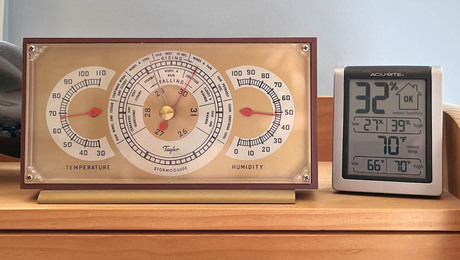
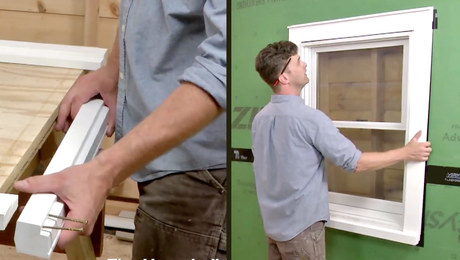










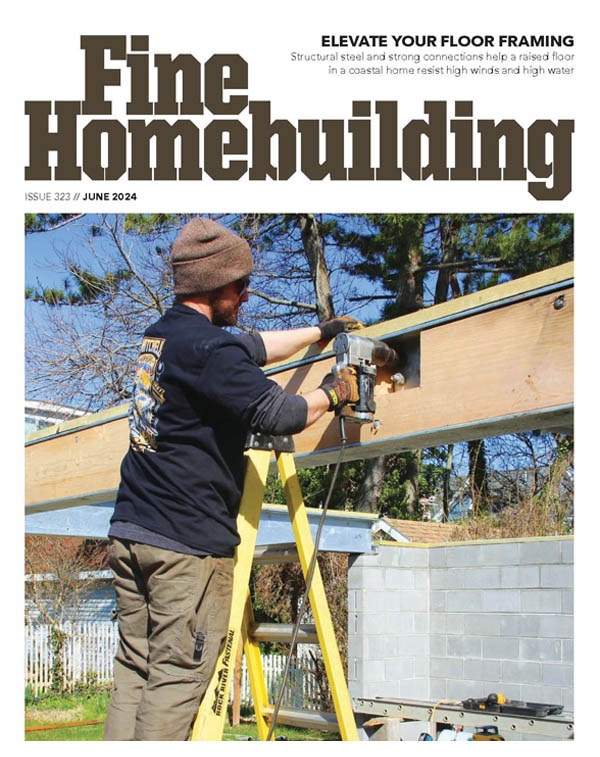

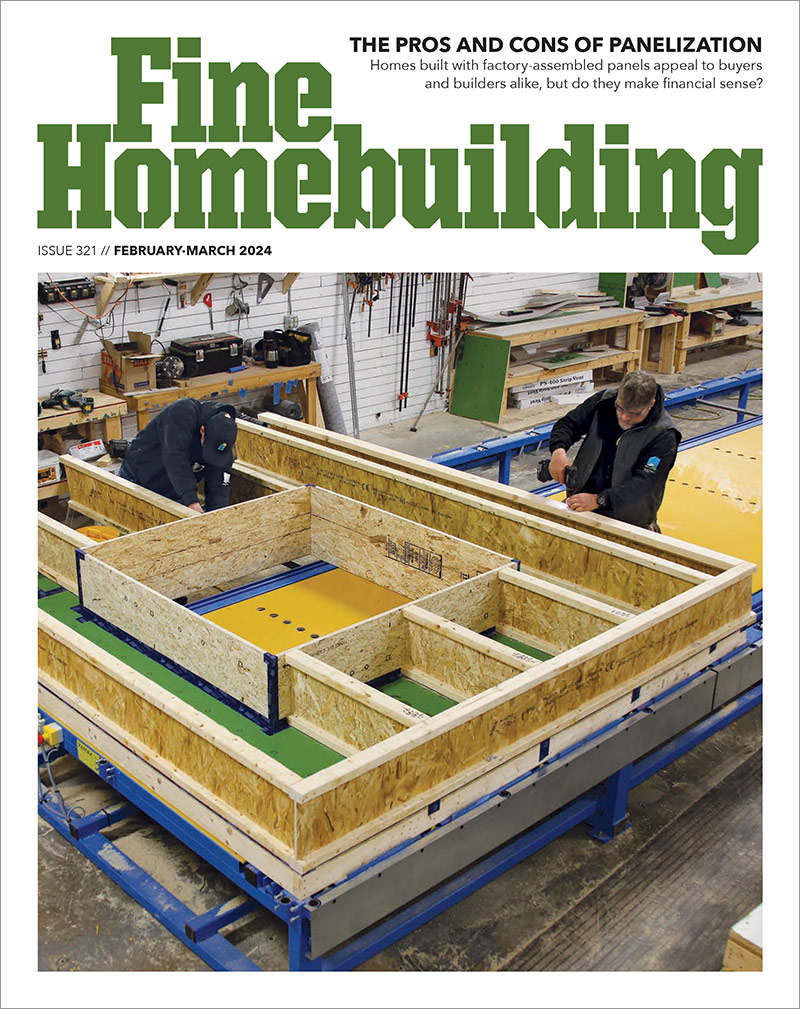
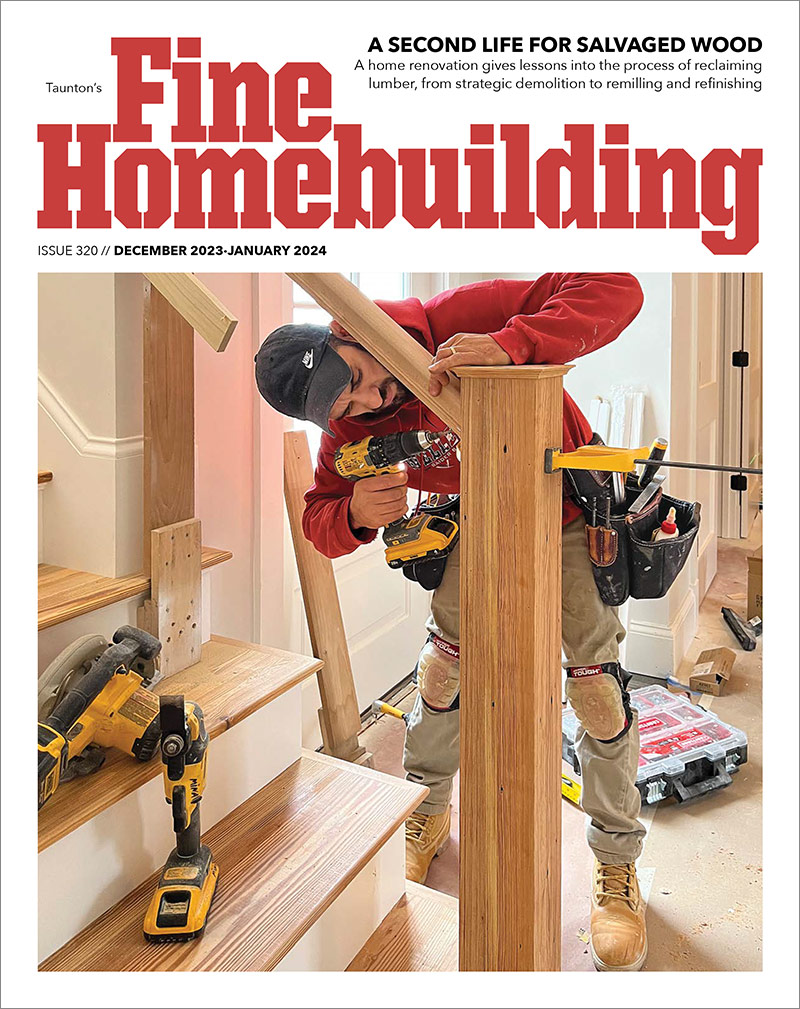
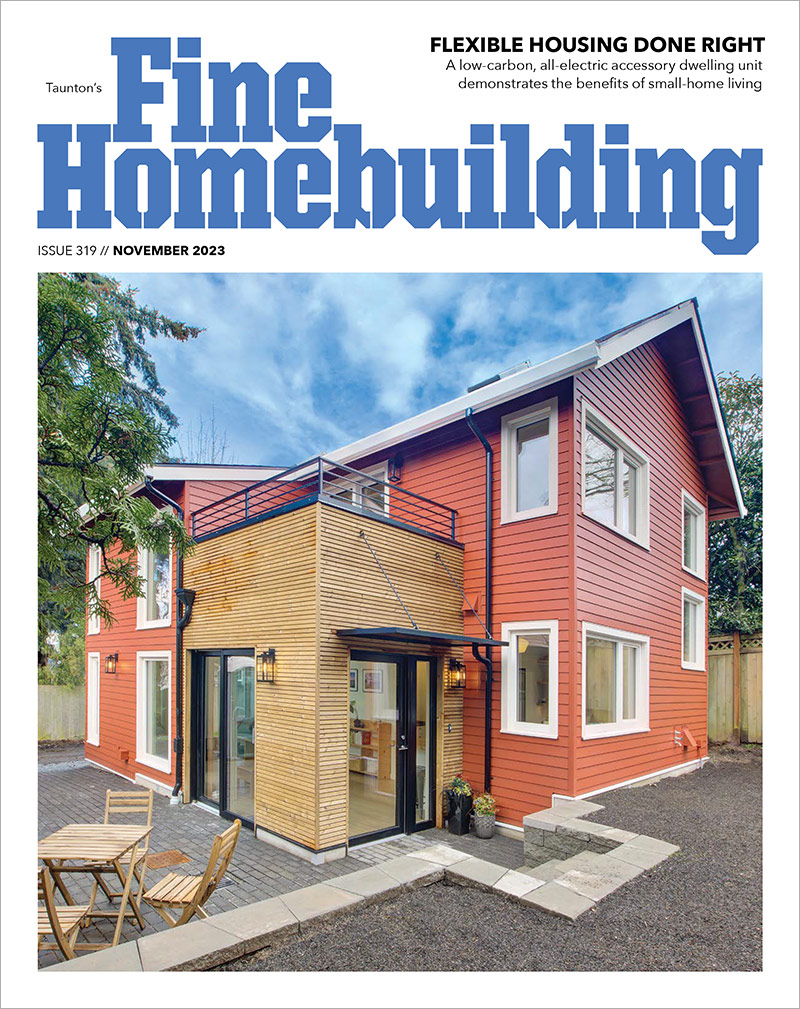

Replies
Only thing I know is my local mill won't cut city trees. There's to great a risk of embedded objects.
You might check with some local woodworkers associations. They might know someone who will take the risk.
Just A Guy With A Hammer
There are plenty of local guys with portable saw mills that will gladly mill the lumber. They will just ask that you pay for the new blade when it breaks due to the embedded objects.
David WestMeadowview Constructionhttp://www.mvconstruction.com[email protected]
Much thanks to Frenchy and to everyone else who suggested WoodMizer, and for all your other tips. I emailed WM last night and they got right back to me with 3 names today. The 2nd guy I called has a Woodmizer for his family timber framing operation. He's eager to come out and has suggested the black powder drill to split the big tree down to a manageable size. 30 cents per board foot, plus a $65 site set up charge. Sounds like a pretty cheap way to buy quarter sawn white oak, huh? Anybody know what the market lumber yard rate is?
If it is nice and dry, straight and not checked or split too bad, you could probably get $3-$5 per bd foot. Keep in mind the end user will need to straight line rip it and run it through a jointer and planer so it's not easy to compare the price to what the lumber yard would charge since they usually sell it s2s, 23s, or s4s. The labor will cost more than the cost of the lumber in my experience if you don't have a straight line rip saw and a 4-sided planer. Just my 2 cents.
David West
Meadowview Construction
http://www.mvconstruction.com
the problem is lumberyard prices are sort of retail and sawmill prices are what I'm familar with.
$4-6 dollars a bd. ft. for regular white oak and another dollar or so for quarter sawn is typical retail. However sawmill prices are 80 cents a bd.ft. and no up charge for quarter sawn. (the mill doesn't care if it's quartersawn or not. they are just boards that they need to sell).
These are all rough and green prices at the mill for mill run
Mill run is what the log yields as it comes off the log..There can be anywhere from 10% to 40% FAS and the balance will be various grades..
Please be aware that a board can be down graded due to too much character but the whole board may not be in poor shape and you may not need the full length of the board so what is graded as 2B may still be used as a FAS board if you use a shorter piece.
Personally I like boards with a lot of character.. swirls, burls, fiddleback, knots, etc.. is more interesting than straight grained wood to me.. In my house any straight grain I turned away because I'd much rather look at all that character than boring straight grain stuff..
Now I should explain to you how to sticker that wood up so you wind up with something other than a twisted warped mess.
Are you interested or have you done it previously?
Edited 1/9/2009 4:32 pm ET by frenchy
>> Now I should explain to you how to sticker that wood up so you wind up with something other than a twisted warped mess. >> Are you interested or have you done it previously? Can't I just use the wife's blow dryer? She has really big hair.
Might work, I heard frenchy doesn't have the advantage of big hair to dry>G<
Actually I do have a full head of hair..
seriously, you need to have a plan in place for the lumber - it needs to be stacked on a level (or at least planar) surface and stickered - most people use ~1" square sticks - I use 1" X 1/2" - the stacks don't get so tall so quickly - it is necessary that air circulates the stacks - if you stack stuff inside, you might consider running a box fan or two for a few weeks - have your woodmizer guy saw plenty of sticks while he's there - ideally the sticks should be dry or of a species such as Ash that won't cause 'sticker stain' - you probably won't have any trouble since it's winter and the wood is relatively dry - anyway, careful stacks, sticks right exactly on top of each other - air circulation, and keep all precipitation out of the stacks - I've found 3" X 3" 'bolsters' handy to have while stacking - start the stacks on a set, another set at about 4' up the stack - maybe a set for the top, that you can stack some CMU's on to help keep the top layer or two under control - have your WM guy cut them out of some marginal material while he's there - the natural tendency is for the best boards to end up on the bottom of a stack (which is good from the standpoint of keeping the boards flat), and then you have to move a ton or three of wood to get to the boards you want - usually by yourself, it's real hard for one person to do a good job of reassembling a stack after you get the material you're after - just somethings to consider - have fun - "there's enough for everyone"
You sure you want your wife waving that hair dryer around for the next year? I mean 24/7/365 won't leave her much time to tote that barge and bring you beer <grin>.
Besides if you don't do it properly you'll wind up with a whole lotta pretzle shaped wood.. OK if your intention is to build a lot of boomarangs but not so good if you want to build anything flat.
One more suggestion, cut the logs into 8'6" NOT JUST 8 FOOT LENGTHS.. THAT WAY ANY SNIPE OR ISSUES CAN BE DEALT WITH and you don't wind up with 7'6" boards when you want or need 8'
OK here's a brief story on how.. First make it flat.. if you store things in a dip the boards will acquire the dip. The first level should be a minimum of 4 inches off the ground.. If you live where there is a lot of rain increase it more and consider putting a piece of plastic underneath the stack to prevent ground moisture from coming up..
Gravel too is a good place to stack it as is well drained concrete..
When you sticker things try to put a sticker about every 10 inches right on top of the timber or whatever else you use to raise the wood off the ground..
All stickers should line up!
When you get to the top of the pile put another set of stickers on because you want air to flow freely around. Howeveryou aren't done yet!
You can either weight the boards down ( I don't recommend it because most common used item is cement blocks and they will shed grit which is hel! on your cutting edges. Plus you can get localized pressure points which will cause the wood to warp or dip..
I like to use those narrow cheap tie down straps.. you know the ones with a little ratchets.
Put a strap about every 2 feet right over stickers (not between them) tighten them very well and plan on comming back a week later and retightening them.. you'll have to retighten every 2 weeks or so for about 6 months or so then check them 2 twice a year.
Now you need to protect the wood from rain and most important sun.. a tarp can be used but it can't cover the sides or ends Or plywood etc.. Ideal is indoors, if it's heated then the wood can dry out even quicker.
Treat the ends of the boards with wax or heavy coats of paint.. don't worry about slopping onto the boards you'll plane the wood anyway and take it right off.
There are ways to speed the whole process up if you want.. For instance you can seal the whole pile up with plastic and run a dehumdifier pulling the moisture quickly out. You can get boards furniture ready that way in a month.
Frenchy,I'm familiar with the process of air-drying lumber, in a general way, but you've added some details that sound very helpful.Anyhow, the Wood-Mizer crew was here this morning and a plan is emerging. They looked over a few other trees on my property (in addition to the ice-toppled oak) and it looks like I'll be getting quite a bit of white oak, ash, maple and black locust lumber, plus a couple seasons worth of firewood, for about a grand or so. They expect it to be a 2-day 2-person operation including the machine set-up and chain sawing time. Lumber milled by the board foot, chain saw work by the hour. We'll see. If that price holds it will be a good deal, considering a cord of firewood alone runs over $150 in my area. I'm thinking I'll sketch up a tractor and lumber shed, maybe 12 x 18 or so, and size some of the mill work accordingly.
Then sticker the wood and build the shed when the time comes.
Hey Tom- can you take some pix and post here of the cutting? I've seen it live with some of my own logs, but never get tired of it. I can watch other people work all day.Steve
When a storm took out a large maple on our city lot, in cutting it up I found a hardware store!! Not only nails, but chains and a pair of hinges.
All grown into the tree, couldn't tell from the bark.
It's a big risk you take. The bigger and taller the tree, hopefully the less risk. My home town of El Reno, Ok was a Rock Island Railroad town. Lots of good old trees had spikes in them.
Just A Guy With A Hammer
The WoodMizer guys are coming out tomorrow morning.
They are aware of the metal risks but did not sound too concerned.
They will run a metal detector on the tree,and seem to be experienced with the milling process.
Depending on what kind of plans you have for it you might see about getting some cut 8/4 or 10/4 rift (ideally grain at 45) for use as legs..
William the Geezer, the sequel to Billy the Kid - Shoe
Contact wood miser.. they have people who come to your site and will mill wood for you..
except wait a minute.. a 4 foot trunk is bigger than most can handle so it will require you to split it length wise. Chain saw is the best weapon to achieve that. The nice thing about that is you will wind up with quarter sawn wood as a result..
Hey Tom
I did the same thing here with storm damaged trees.None of mine were four feet in diameter though' but the portable saw that Mike had was able to cut up to 3' and 21' length.
As for pricing there will be a set up fee for the machine, and any given rate per hour.Also a flat rate charge for any broken blades as mentioned in a previous post. I have accumulated nearly a thousand board feet of mixed lumber like oak maple ash pine and walnut
I just so happen to finish a nice red oak hutch this week would like to post pics but not to sure how to maybe another day
Anyways good luck with your project hope you find a local portable mill.
This might help get that trunk onto a portable mill:
http://www.youtube.com/watch?v=GjBZyO4Q-oQ
Another alternitivehttp://http://www.youtube.com/watch?v=yztqNkzLItg&NR=1"Shawdow boxing the appoclipse and wandering the land"
Wier/Barlow
Edited 1/11/2009 12:43 pm ET by dedhed6b
a trunk that size will have to be split (probably quartered) to fit on common portable sawmills - also will be very heavy, I doubt that the mill's hydraulic would manipulate even a half - quartered, it should be all right -
so you need someone with a good sized chainsaw to get it ready for the mill -
if the grain is straight, it can be split using black powder - dive a chainsaw cut right to the middle, pack with half a soup can of black powder, ignite with cannon fuse or ni-chrome model rocket igniters - stay well back -
how long is your saw log? -
I haven't gone out to measure the tree yet. I suppose it might be 60-80 feet long. My own chain saw definitely is not up to the task of preparing the trunk. I don't want to invest in one of the big Stihl saws, which can run up to $1000 new.After I prune off the branches, I'm thinking I'd hire somebody to break it down into 8 or 12 foot sections, and split them down the middle. Or quarter them, whatever it takes.I took Frenchy's suggestion and emailed Saw Mizer. I thought they only sold equipment.This should make some nice boards. Or posts and beams for a timber framed shed to store firewood and lumber. I have a nice long, straight black locust tree ready to go, too.
Lots of discussion on milling and drying lumber on the Knots website. Also at: http://www.arboristsite.com/forumdisplay.php?f=62
Think about what you want to make out of the wood and what thickness you want, plain sawn vs. quarter sawn.
I have had several thousand board feet of wood milled. It is very great to take the wood from tree to finished project. Cheaper also.
Good Luck with your milling project.
Depending on how much milled lumber you end up with, you may be able to sell some of it off to recoup the costs of having the log cut up.
And 1/4 sawn white oak will sell for more than flat sawn, but you don't get as great a yield when you 1/4 saw a log.
I've done it.
Check around for a guy with a 'woodmizer.' It's a portable mill--towable.
These guys charged me 75$ an hour and they can cut the logs any way you like. I got all quartersawn. We loaded right on to my truck and trailer and I took it off to be dried.
Pat
(did not read other posts, in case this is a rerun...)
(just read other posts... wow, total re run... except I have a picture of it!!)
Edited 1/8/2009 8:33 pm by Waters
Another vote for finding a WoodMizer sawyer - this guy is from eastern PA and did a nice job - over 500 BF of Scarlet Oak (although that's me helping):
try looking at: http://www.woodmizer.com/us/catalogRequest.aspx?gclid=COmdiIWygZgCFQMnGgodohebDg or some othe other woodmizer sites. they ussualy have a owner/ operator search function to help you find someone in your area that will mill the tree for you.
It has been a while since I used a guy here locally, but the cost was by the board foot back then.
Be sure to tell whoever you find the diameter of the log(s) you want to mill. The guy I used could only saw logs up to 40" IIRC. He also lowered his bf price if I would offbear and take care of all the waste. Price was considerably higher if he had to bring help and clean up.
Another vote for 1/4 sawn. Be sure to cut some at least 8/4 so you can make legs and larger stuff.
Tom...put a post in here http://www.forestryforum.com/ Great bunch of guys here and I'm SURE someone will get led to your door from this site!
http://www.cliffordrenovations.com
http://www.ramdass.org
Sometimes it's a matter of money or time that makes the difference between getting some good quality air dried furniture wood or just letting it go to a fireplace or landfill... I slabbed a Red Oak that fell in the yard in 2001, but then had a chance at a much larger tree.
About 2-1/2 years ago a bad storm brought down a big and old Pecan tree in a public park. I asked about sawing up the long trunk with the park's maintenance director. He said, "Sure, it's just going to get cut up in to Bar B-Q wood by some of the city employees and then the big stuff will be hauled to the city landfill."
The stump and first 5' feet had started to decay, and I'm not really into "Spalted Woods", so I started from there.... Below, you can see how large a tree this was by comparing it to my 3.2ci, 18" Chainsaw I used. I also used a 20" Huskvarna, but with a standard crosscut chain, it didn't have the lugging power like the old Sears' monster... the size stump makes the Chainsaw look like a tiny-tot toy.... ;>)
It took me three days to saw the green Pecan into 4-8" thick by 18" wide and 8' long slabs. I managed those wet and green slabs with a 600lb rated two-wheel dolly. It took two loads to get all the slabs and some crotch cuts carried home. One of the perks, other than it was free, was that the park crew willingly hauled away all the stump and remains... With the ends of the slabs sealed with roofing tar, they've been air drying since then. Maybe next Fall, I can get the slabs sorted and some of them cut into boards...
Bill
View Image
View Image
View Image
View Image
View Image
View Image
Edited 1/10/2009 6:28 pm ET by BilljustBill
what a trooper you are, Bill!hope you get to make some special items - "there's enough for everyone"
A man with a mission. Gotta love ya!
http://www.cliffordrenovations.com
http://www.ramdass.org
Dave and Andy,
Thanks for the encouragement... ;>)
Here's the Red Oak I cut into 3" thick slabs. About 40 or 50 years ago, the story was that the original owner sprouted and planted trees in pairs. Doing this took in to account that one of them might not make it. In this case, when both did, one grew up on the side of the other. When the windstorm hit, it peeled apart the weaker one. After those bad storms, there's a sadness about seeing a tree laying down across your yard; it hurts to have to "grow" your own lumber... Guess that's why I didn't have the heart to just lopp it up in to chunks of firewood.
It's a messy job, ripping with the grain. By the time you figure the cost of the gas/oil mix, bar oil, a couple of chains, and maybe overheating one bar, one begins to rethink the term "Free" furniture wood. Since the time I cut this Oak and the Pecan tree, I bought rip chains for both saws for when the a "Black Walnut" dream tree goes down... :>)
View Image
View Image
When I finally get finished with my gambrel roof 16'x32' shed this spring and summer, all the lower trunk slabs and the upper the Oak crotch grain sections cut back in 2001 are ready for some resawing and planing...
Bill
It ain't about how much it cost you Bill..it's about the heart and soul you put into it.
There's no price tag for that!
Too many people forget that now-a-daze....or could care less~
When you hand down whatever project you use the wood for one day...it comes with the love, respect and determination you put into it...did I say priceless yet? : )
http://www.cliffordrenovations.com
http://www.ramdass.org